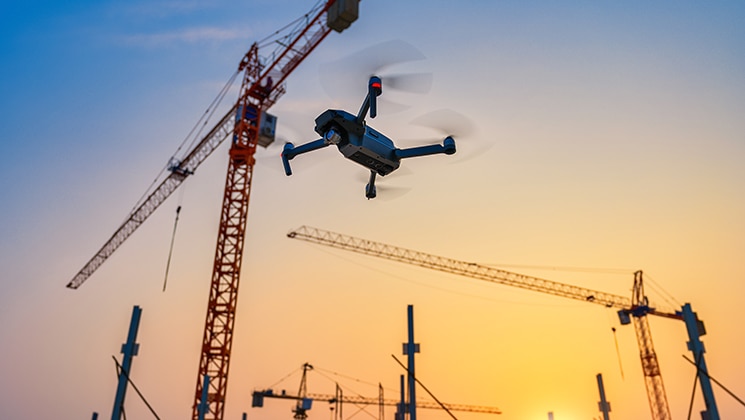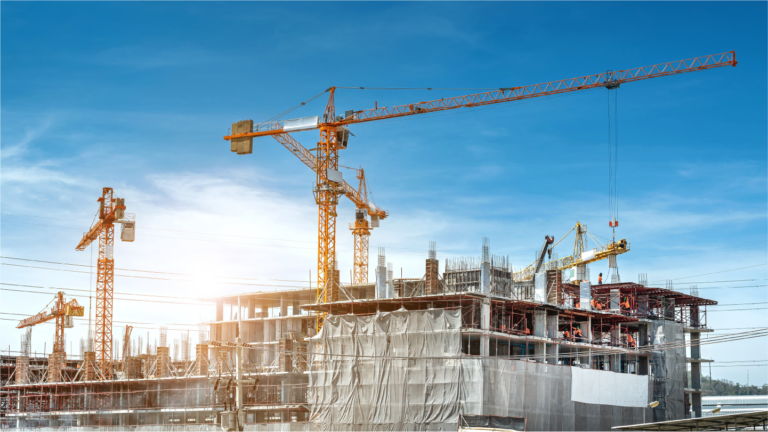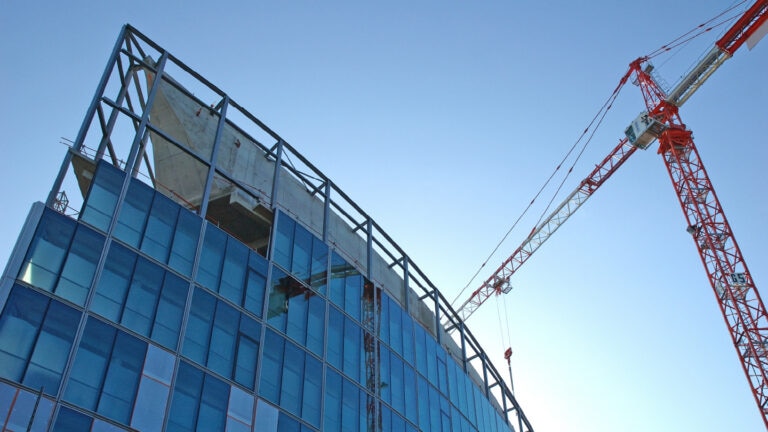
Modular construction is on the rise, and it’s not just for small-scale builds anymore. In 2016 the first modular skyscraper—made from 930 prefabricated units—opened its doors to residents in Brooklyn, New York. Research suggests the modular construction industry will continue to grow by nearly 6 percent between 2020 and 2025.
Why is modular construction becoming a trend? Contractors cite the perks of a controlled building environment, significant cost savings, and shorter build times. But like any project, prefab construction brings along its own unique challenges. In this article, we’ll take a closer look at the pros and cons of modular construction and share strategies that could help reduce your risk when taking on a modular build.
Four benefits of modular construction
1. It’s fast.
Because the majority of the building happens off site, modular construction is significantly faster than traditional builds. Construction of the modules can happen concurrently to on-site building, which cuts down build times considerably. The factory environment and standardization of the build also mean contractors can take advantage of automation to speed up build time drastically and avoid weather delays or on-site changes that slow down the project. According to McGraw Hill, modular construction cut down build times for 66 percent of building professionals, with nearly 35 percent reporting that they saved more than a month on a single project.
2. It’s more environmentally friendly.
Creating modules in a factory environment cuts down construction site waste significantly because it is more controlled, more automated, and more flexible. Construction companies don’t have to worry about damage to materials from poor air quality or weather. They can even refurbish modules that are damaged or no longer in use. The same research by McGraw Hill shows that 77 percent of contractors reduced waste by switching to modular construction.
3. It’s safer for workers.
Indoor construction environments are typically less hazardous than their traditional, outdoor counterparts—and that’s good news for construction workers. In a factory environment, workspaces can be designed ergonomically to reduce regular wear and tear on the body. The controlled environment means better air quality, access to tools, lighting, and more.
4. It’s cost-effective.
One of the biggest perks of modular construction is cost-effectiveness. With less waste, a more efficient building process, and greater reliance on automation, modular builders save money on materials and labor. And the factory environment reduces the risk of theft and vandalism on project sites, saving even more money and time. McGraw Hill reports that 41 percent of builders lowered their costs by as much as 6 percent by shifting to a modular model.
Addressing modular construction challenges
Although modular construction can be an effective way for contractors to reduce costs, save time, and stay green, it does come with additional risks not found in traditional projects. Here are some of the ways you can address these challenges and mitigate risk:
1. Quality control
Like any construction project, quality control is critical to help ensure both worker and customer safety. While the fast pace of modular projects is great for ROI, automation and quick builds can increase the risk of construction defects that impact the quality and safety of the building. Contractors and manufacturers that participate in this work should have a robust quality assurance program to ensure the quality of the process and to detect individual issues for each component before it arrives on site.
How to help reduce your risk: create quality control checklists to ensure that each unit is up to standard before leaving the factory. Similar checks should be done after arrival to ensure the unit hasn’t been damaged in transit. Consider using the Prevention Through Design (PtD) process when building modular components to help reduce your risk.
2. Transportation
Because companies transport modules after they are built, they can be more easily damaged en route. Vibrations and stress from travel can damage the module and cause components to come loose, which may impact the structural integrity of the building after installation. Companies also need to consider potential transportation risks—often, drivers ship modules to the site on wide load trucks, which is potentially hazardous and can lead to accidents.
How to help reduce your risk: before shipping, stress test each module to ensure it can withstand vibrations and other stressors during travel. It’s also helpful to build your modules as close to the installation site as possible to reduce strain on the building and reduce the potential risk of auto accidents.
3. Installation
Although most aspects of modular construction are done off site, modules will need to be connected and installed on location. This installation will sometimes require the use of specialized equipment such as cranes and hoists. Installation using modules is subject to the same risks as traditional buildings, including weather delays and site changes. If you don’t have a skilled team that is familiar with modular construction, damage can occur during installation that could impact the structural integrity of the building as a whole.
How to help reduce your risk: do preinstallation quality checks to ensure all materials are ready to install. You can also develop an installation mockup procedure for each build, to ensure all components are connected correctly. Give your team ample time for installation in case of delays. Finally, to help avoid injuries and accidents on the project, use qualified equipment operators and preplan installation to ensure that risk mitigation strategies are deployed.
Keeping your projects protected
Construction companies around the world are embracing the perks of modular construction and finding new ways to innovate within the industry. But as modular construction grows, it’s important to stay protected. Working with your insurance provider to discuss any gaps in your coverage will help keep your business safe and ensure your team can keep revolutionizing the construction industry, one module at a time.
Liberty Mutual is a leading provider of insurance for construction companies and contractors of all sizes. Learn more about our solutions and how we can support you.
Related insights
This website is general in nature, and is provided as a courtesy to you. Information is accurate to the best of Liberty Mutual’s knowledge, but companies and individuals should not rely on it to prevent and mitigate all risks as an explanation of coverage or benefits under an insurance policy. Consult your professional advisor regarding your particular facts and circumstance. By citing external authorities or linking to other websites, Liberty Mutual is not endorsing them.



